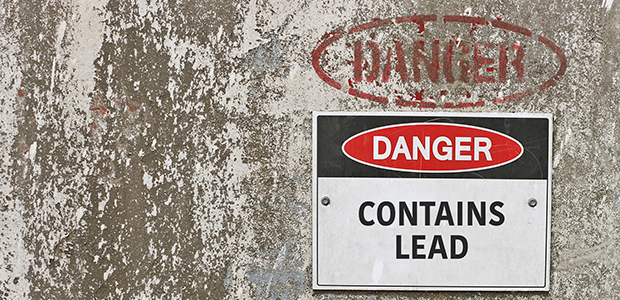
Michigan Lowers Acceptable Blood Lead Levels for Workers
Under the new MIOSHA rules, employees must be removed from lead exposure when their BLL reaches 30 μg/dL and cannot return to work involving lead exposure until their BLL falls below 15 (μg/dL).
Updated administrative rules that lower acceptable blood lead levels for workers were filed in Michigan last week, with the new rules becoming affected Dec. 11, according to the Michigan Department of Licensing and Regulatory Affairs. Michigan is the first state to lower acceptable blood lead levels for workers, LARA reported.
According to the Michigan Occupational Safety and Health Administration (MIOSHA), the new rules are an important step toward protecting Michigan workers from workplace lead exposure. "Fact-based rule promulgation is an essential element of MIOSHA's mission to protect the safety and health of Michigan workers," said MIOSHA Director Bart Pickelman. "These updated worker blood lead levels reflect today's knowledge and are considered necessary to safeguard employees in this great state from the hazards of lead."
For adults, the workplace can be the greatest source of lead exposure, with work activities that can lead to lead exposure including the following:
- abrasive blasting of bridges, overpasses, or water towers
- manufacturing or refurbishing batteries
- demolition or remodeling activities
- working in gun ranges
The diagnosis and treatment of lead exposure if based on the blood lead level (BLL) measured in micrograms of lead per deciliter of blood (μg/dL), according to the LARA announcement. Previously, MIOSHA rules allowed employees to have BLLs of 50-60 μg/dL before they had to be removed from lead exposure, and they could return to work when their BLL was below 40 μg/dL.
Under the new MIOSHA rules, employees must be removed from lead exposure when their BLL reaches 30 μg/dL and cannot return to work involving lead exposure until their BLL falls below 15 μg/dL.
Existing federal OSHA standards for lead and the previous MIOSHA lead standards are based on scientific information from more than 35 years ago. In 2019, federal OSHA plans to issue an Advance Notice of Proposed Rulemaking on BLLs for Medical Removal, and other state OSHA plans are updating their rules.
"We can say with pride that Michigan now leads the nation in protecting workers from harmful lead exposure on the job by being the first state in the nation to update its standards to dramatically reduce allowable blood lead levels," said Dr. Michael Berneking, president of the Michigan Occupational and Environmental Medical Association. "We hope that other states and the federal government will look to Michigan as an example and work toward making changes in the lead standard in their jurisdictions to safeguard the working populations."
The revised rules were filed with Michigan's Office of the Great Seal on Dec. 11, effective immediately. MIOSHA's enforcement divisions are implementing a temporary stay of 60 days on the enforcement of new BLL to give employers time to ensure compliance with the new rules.